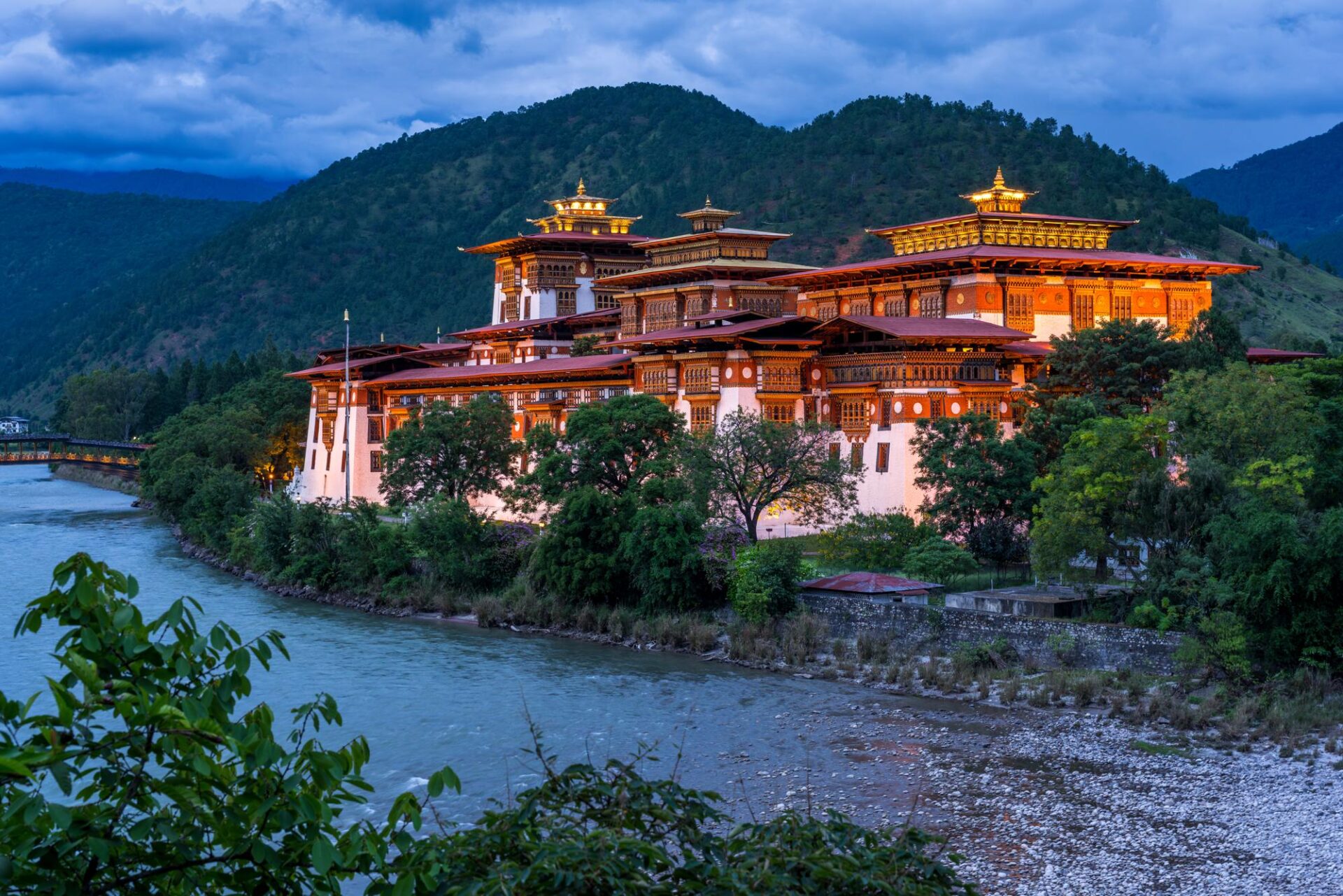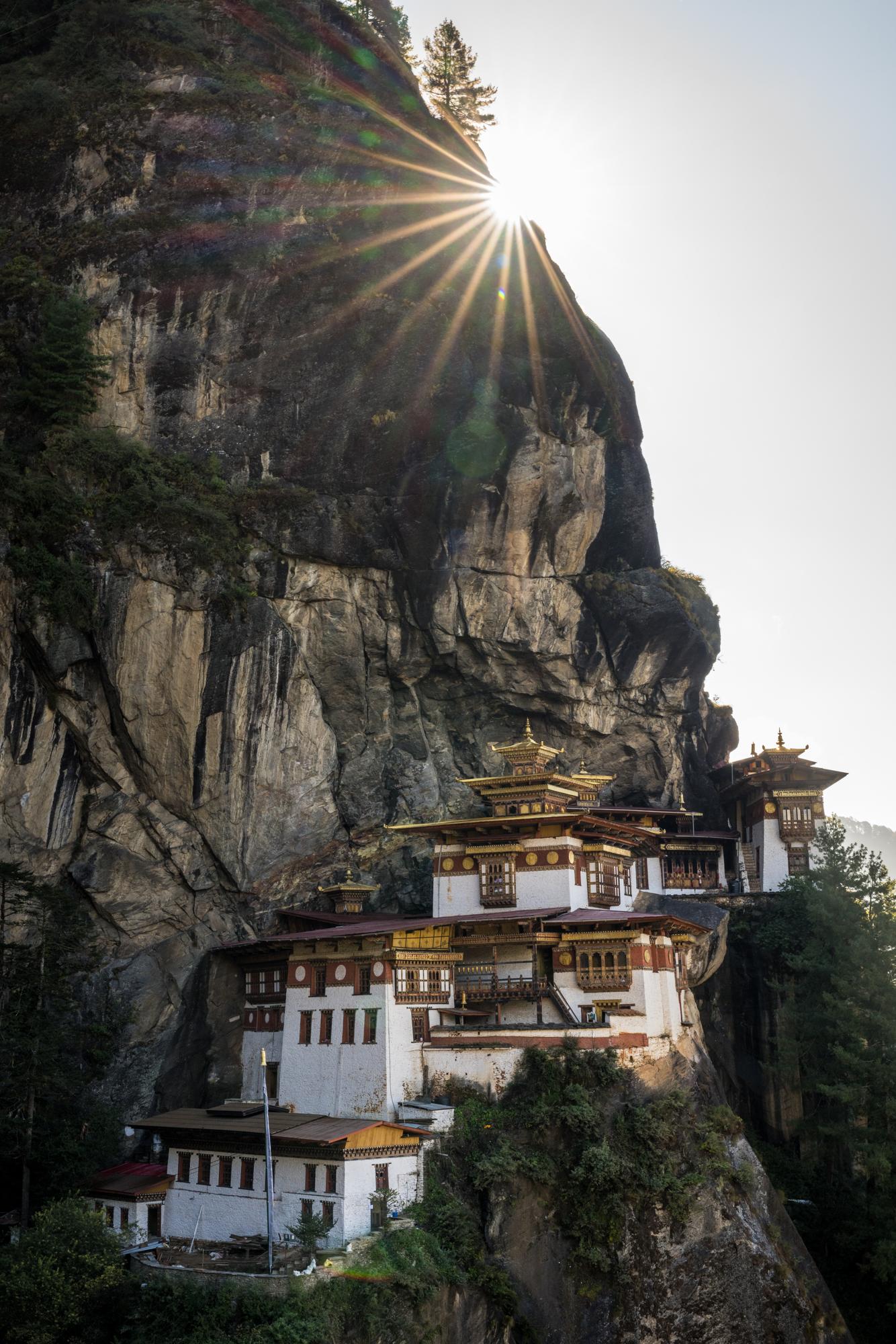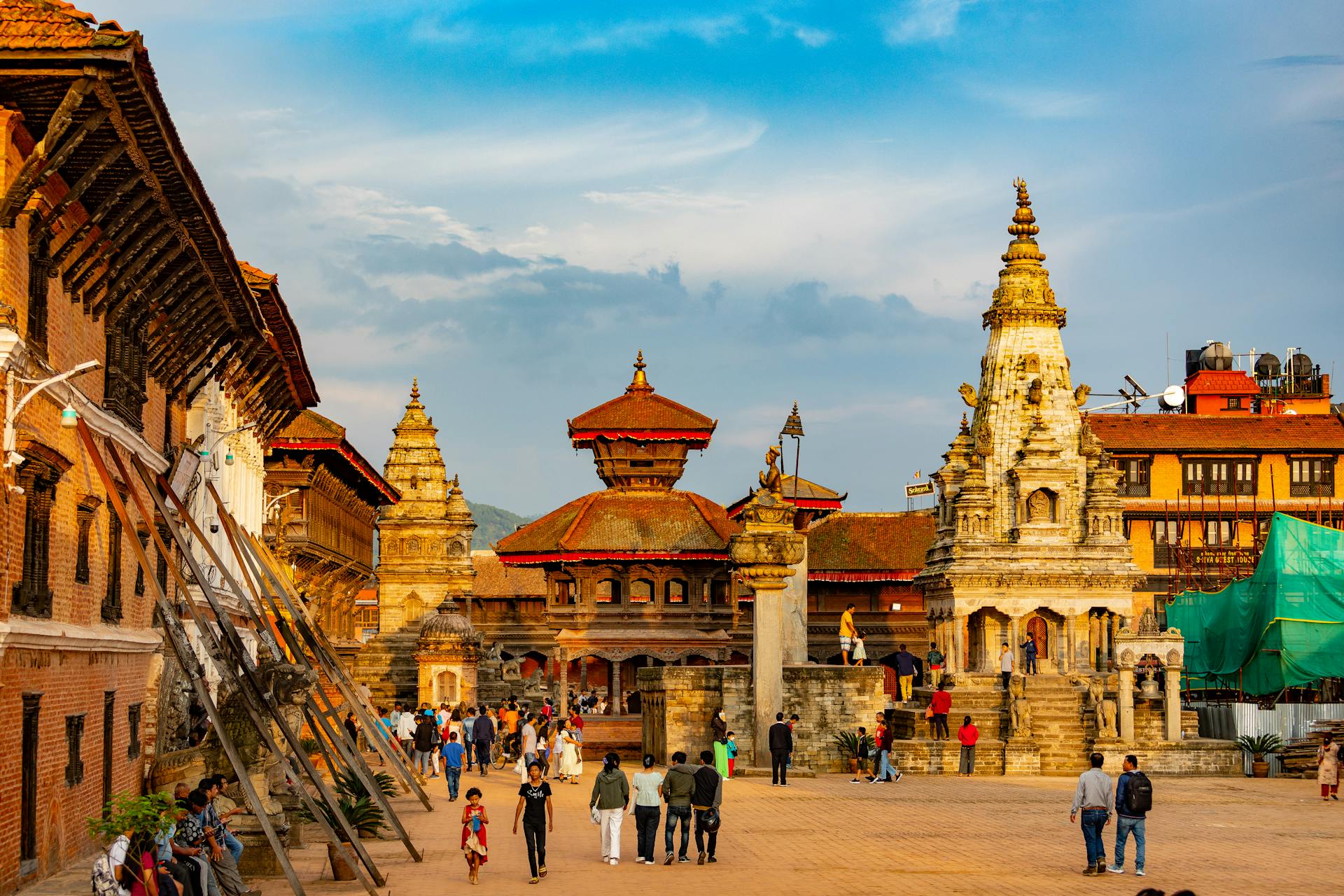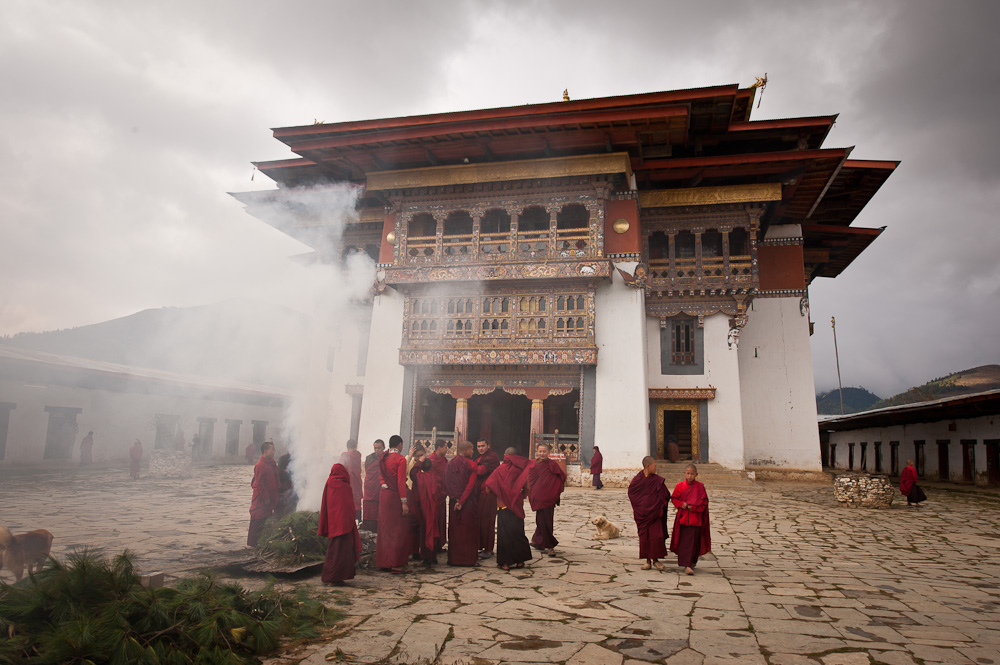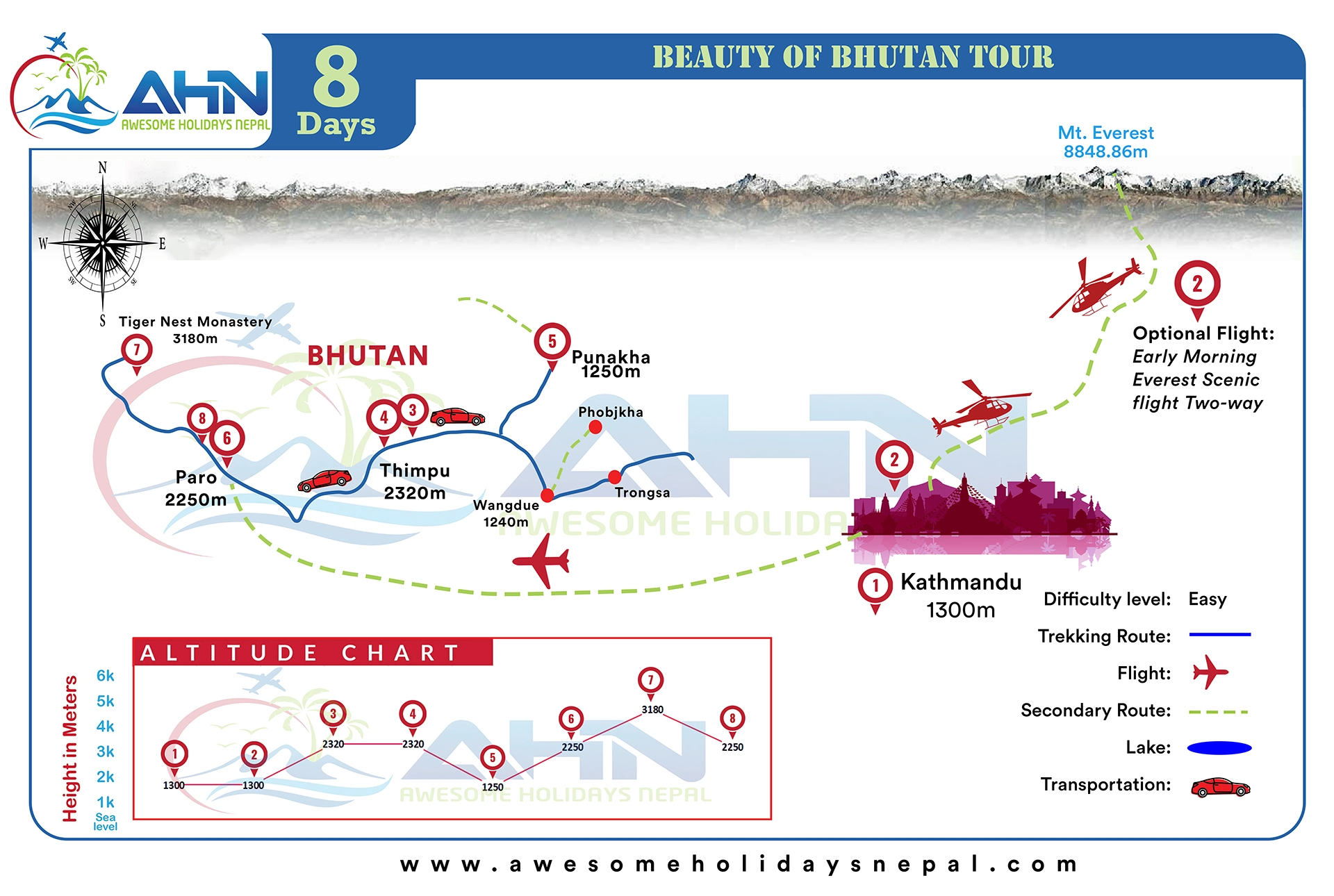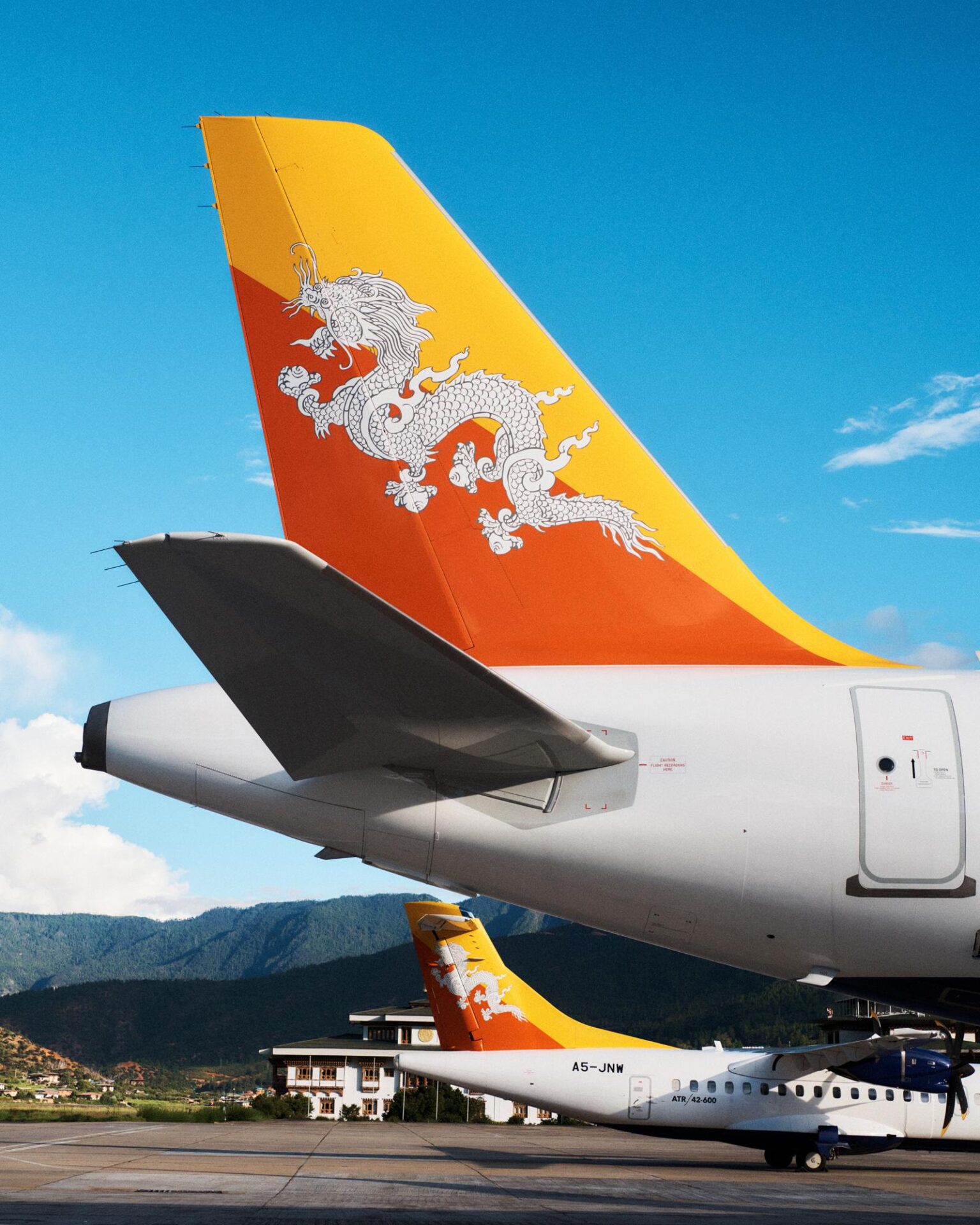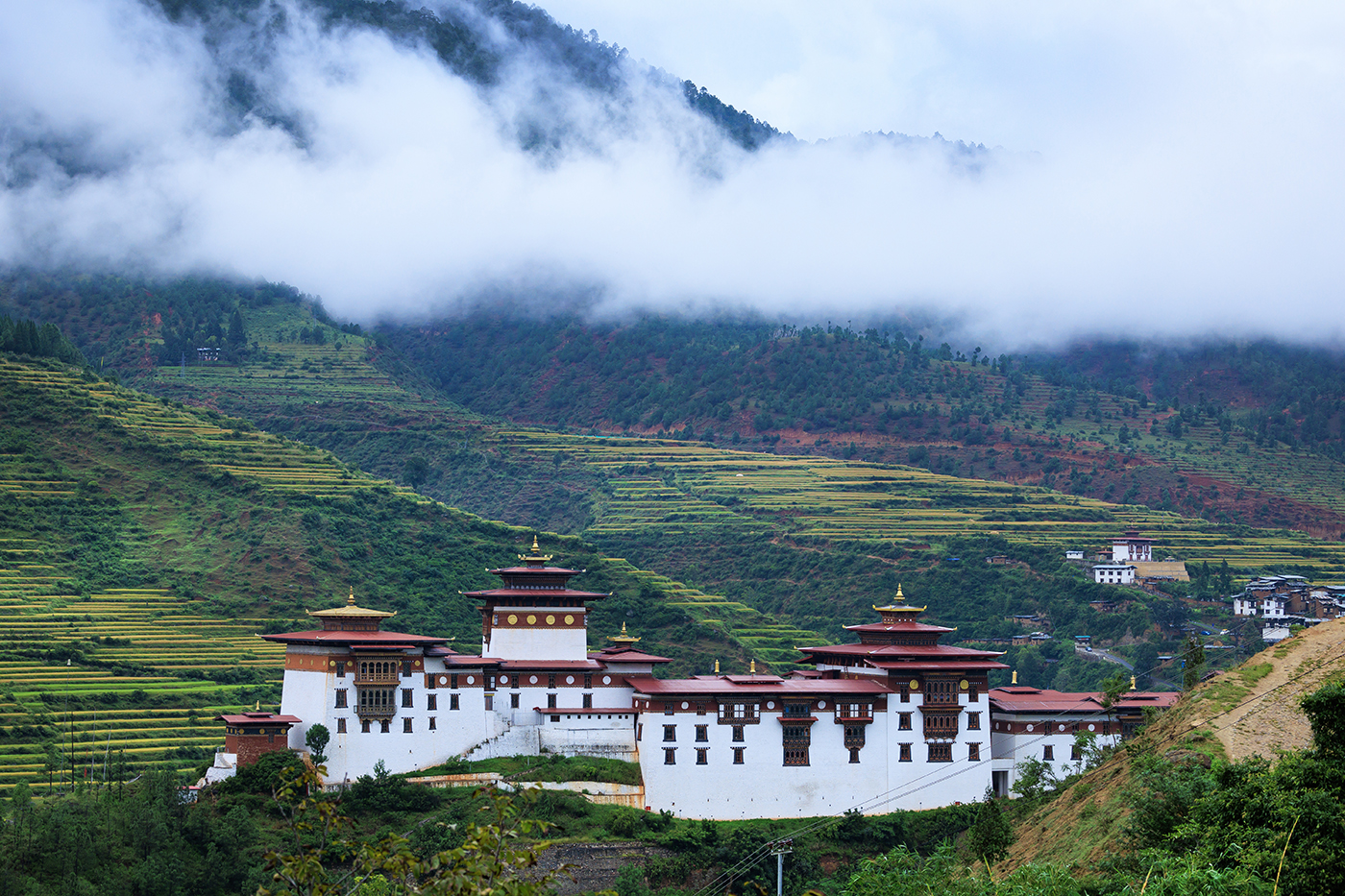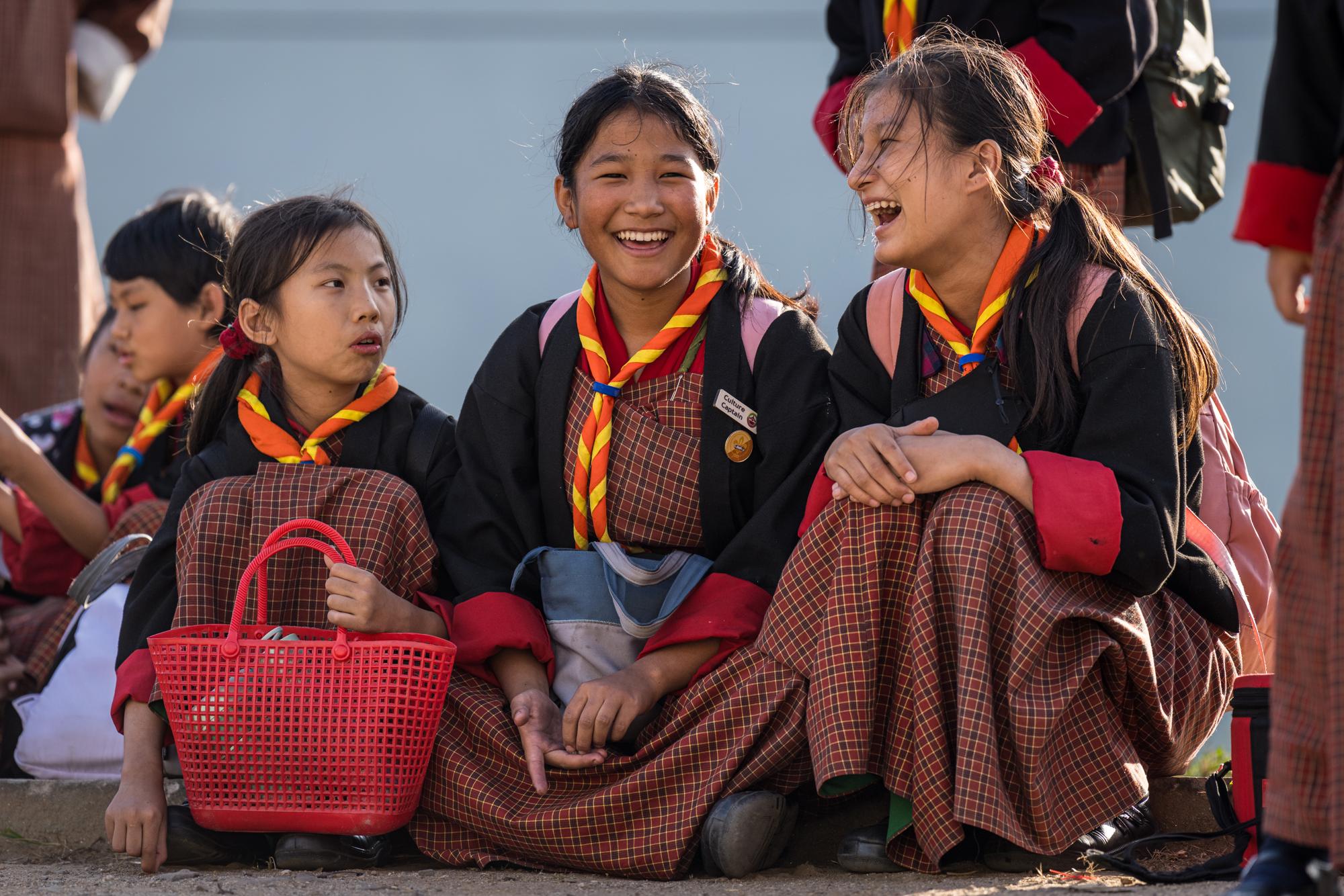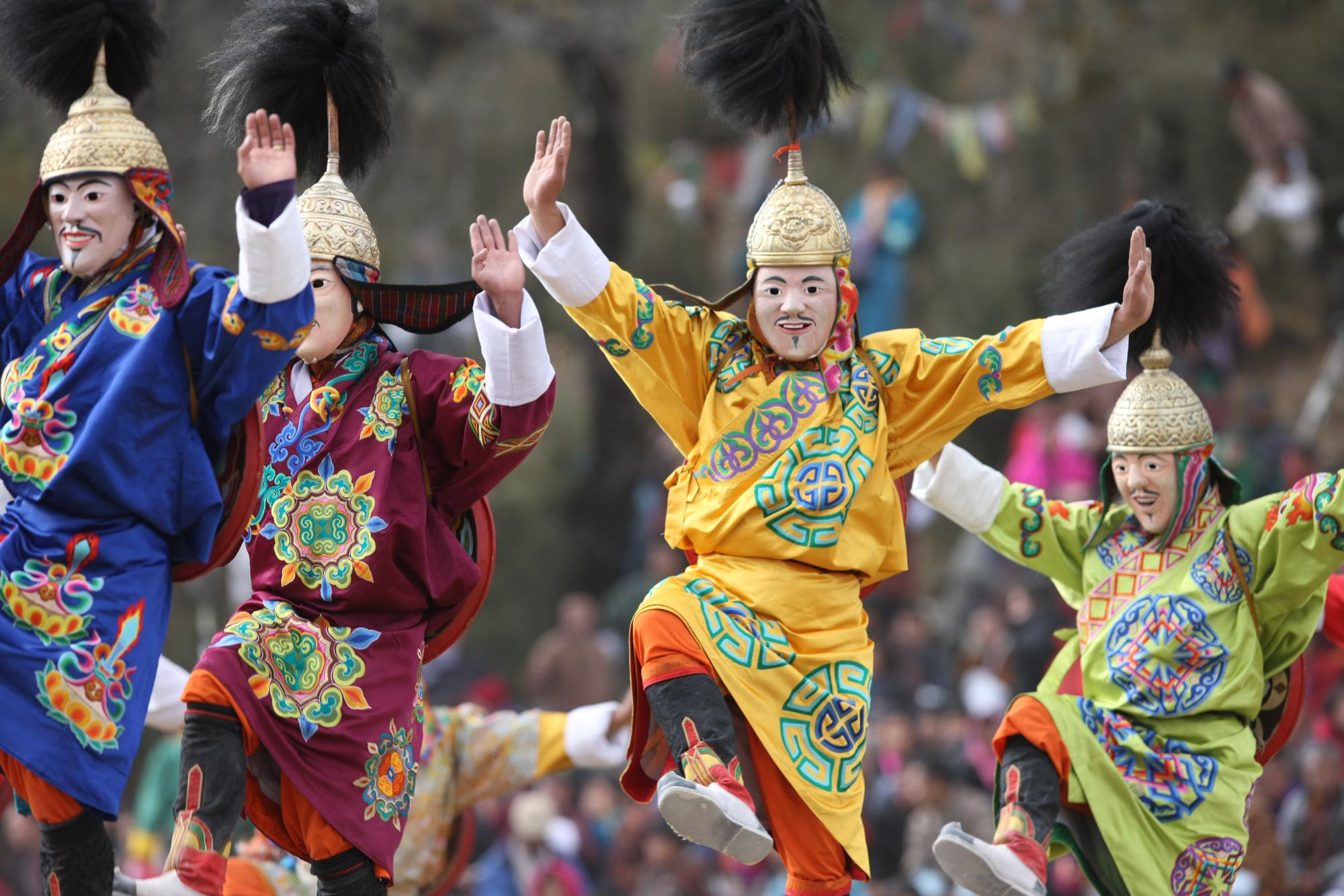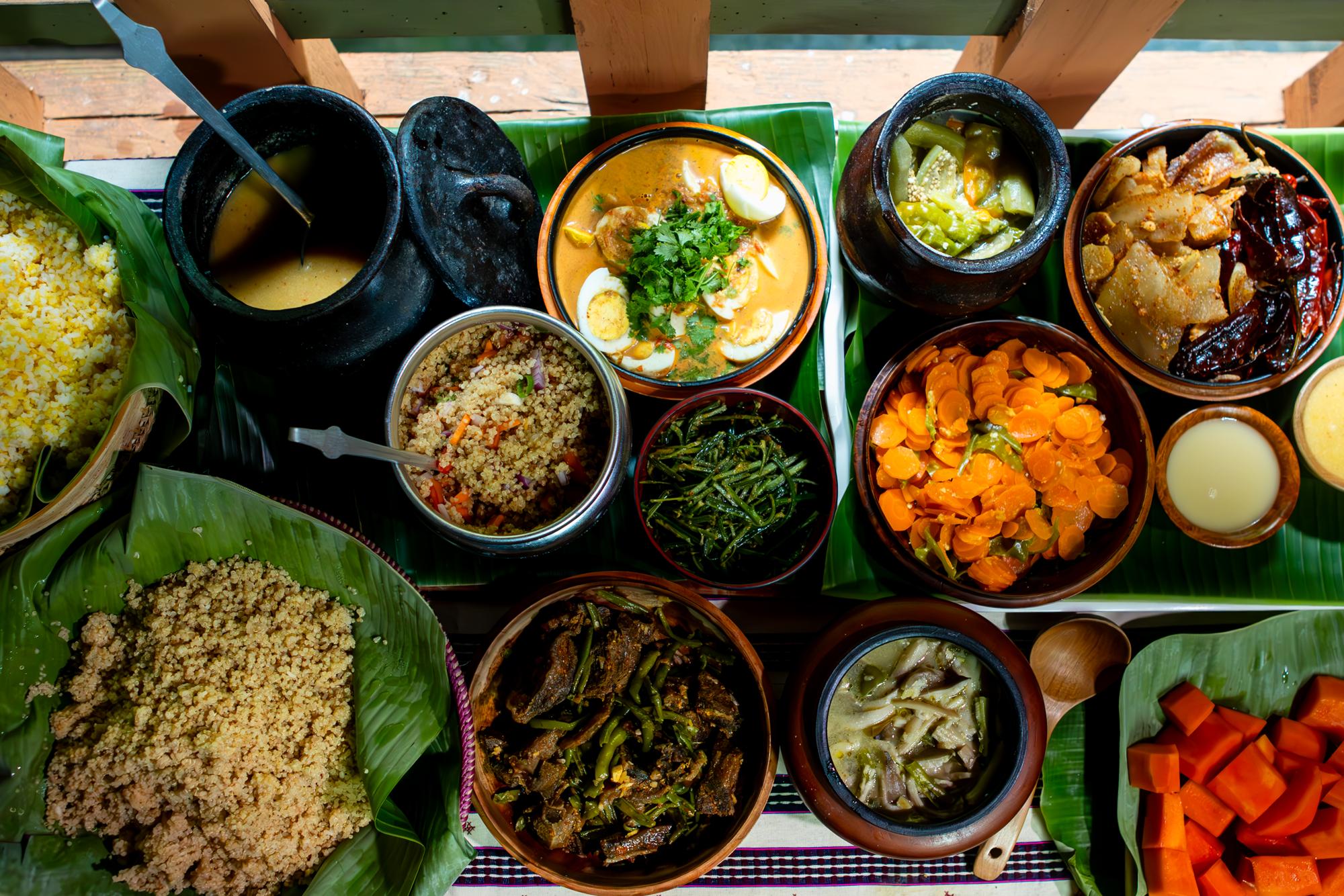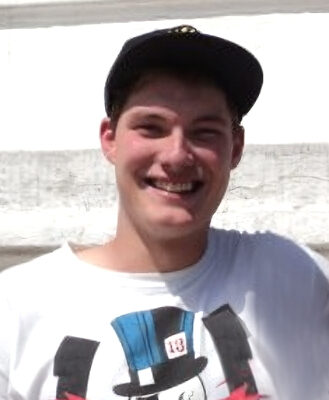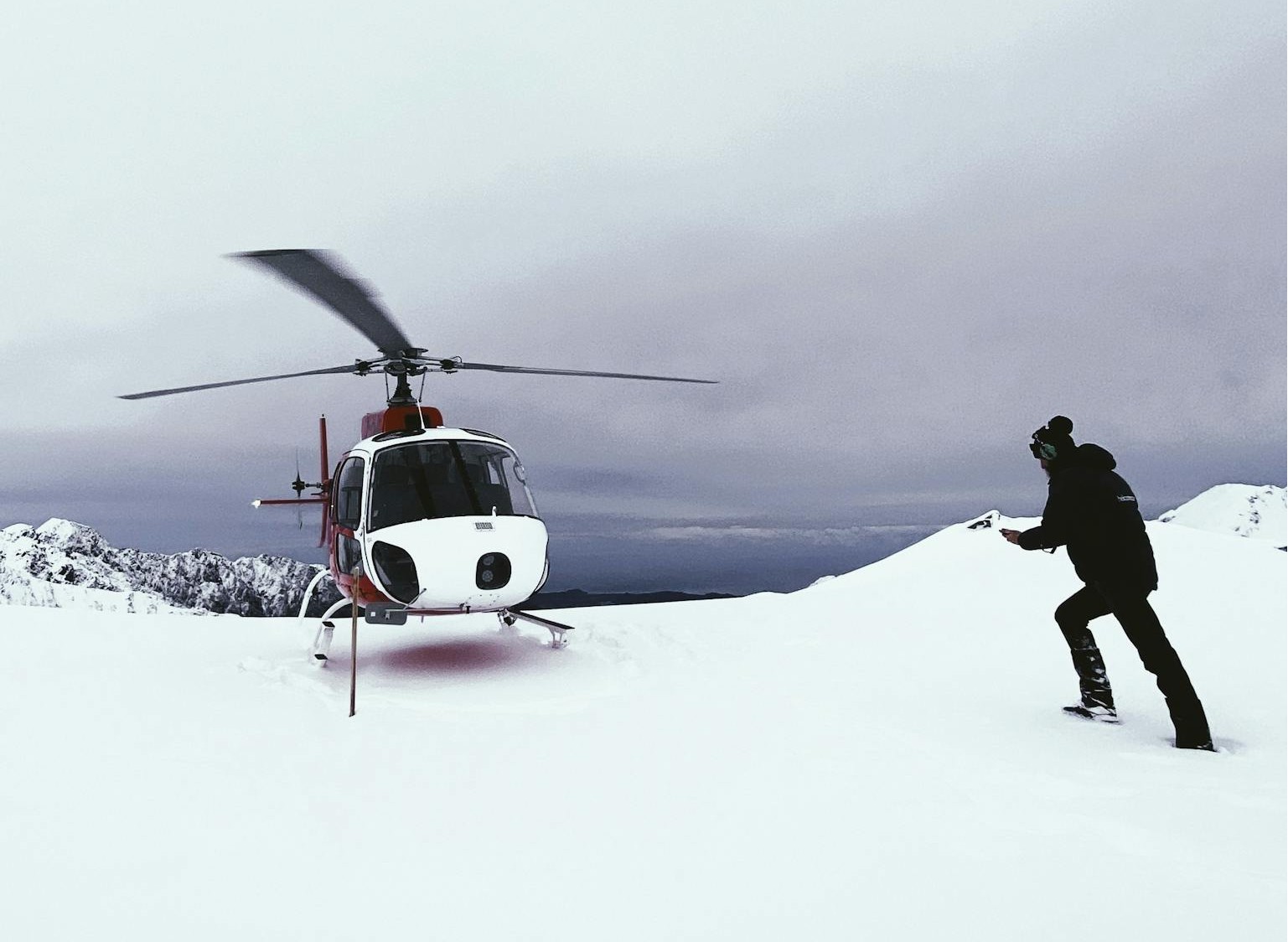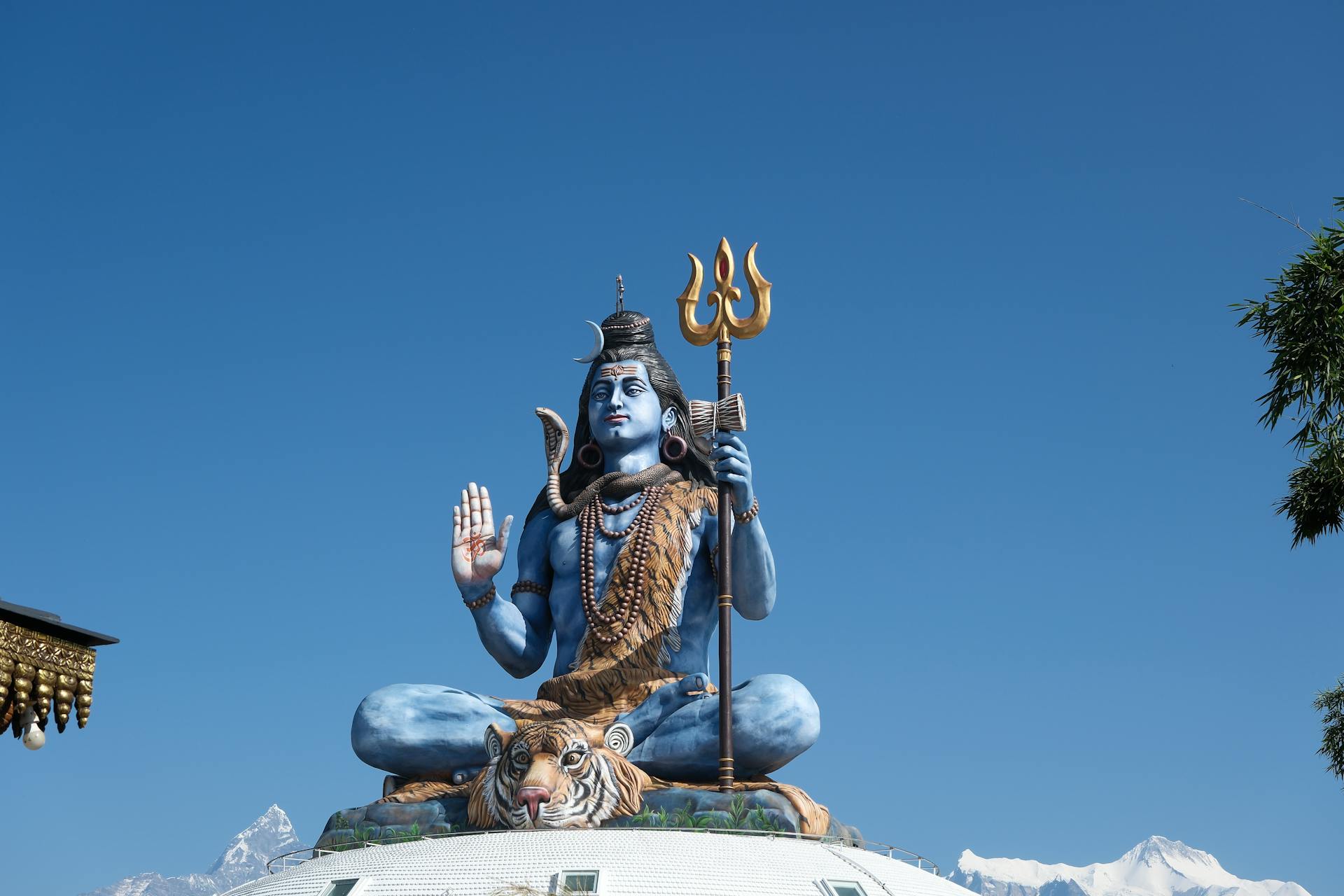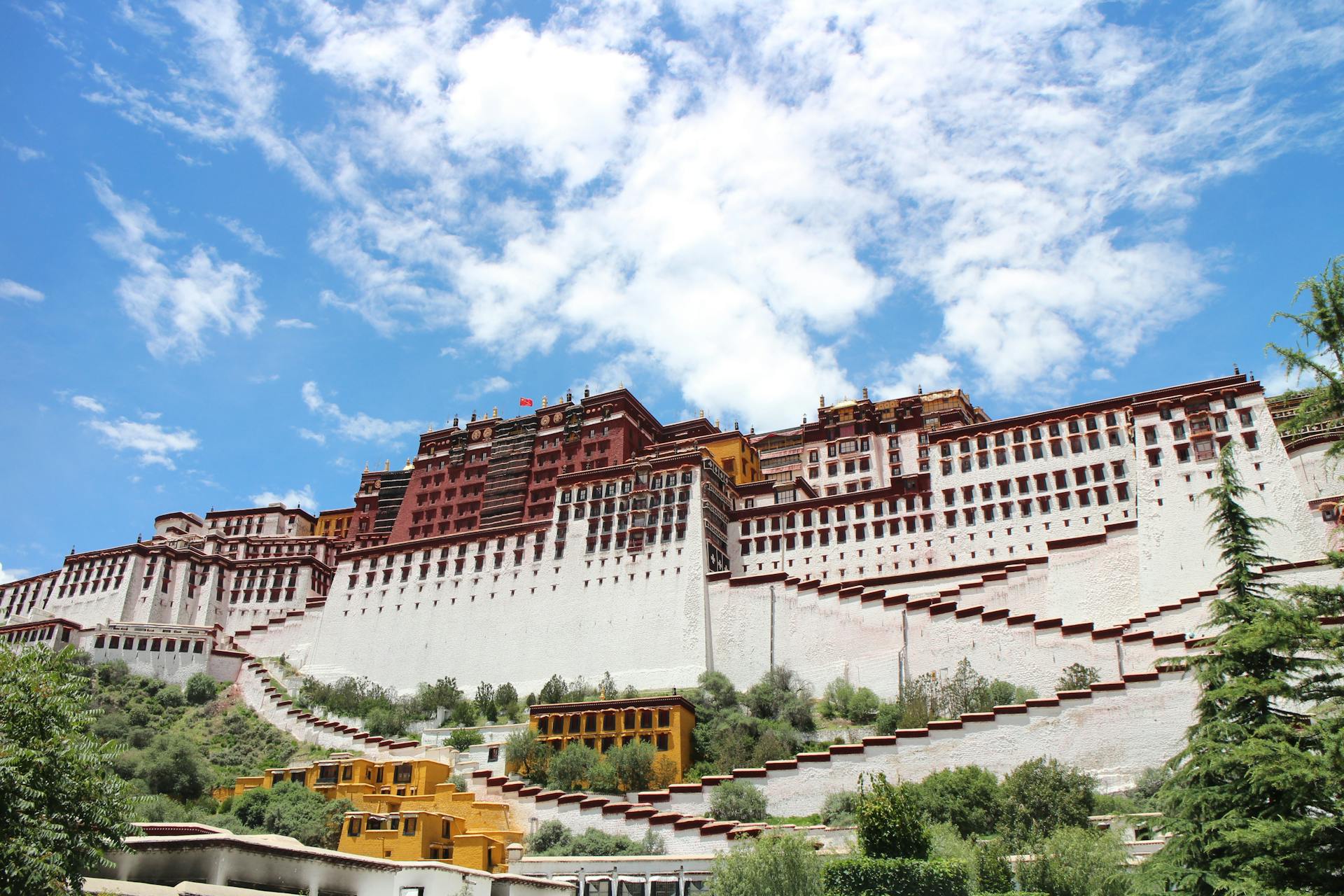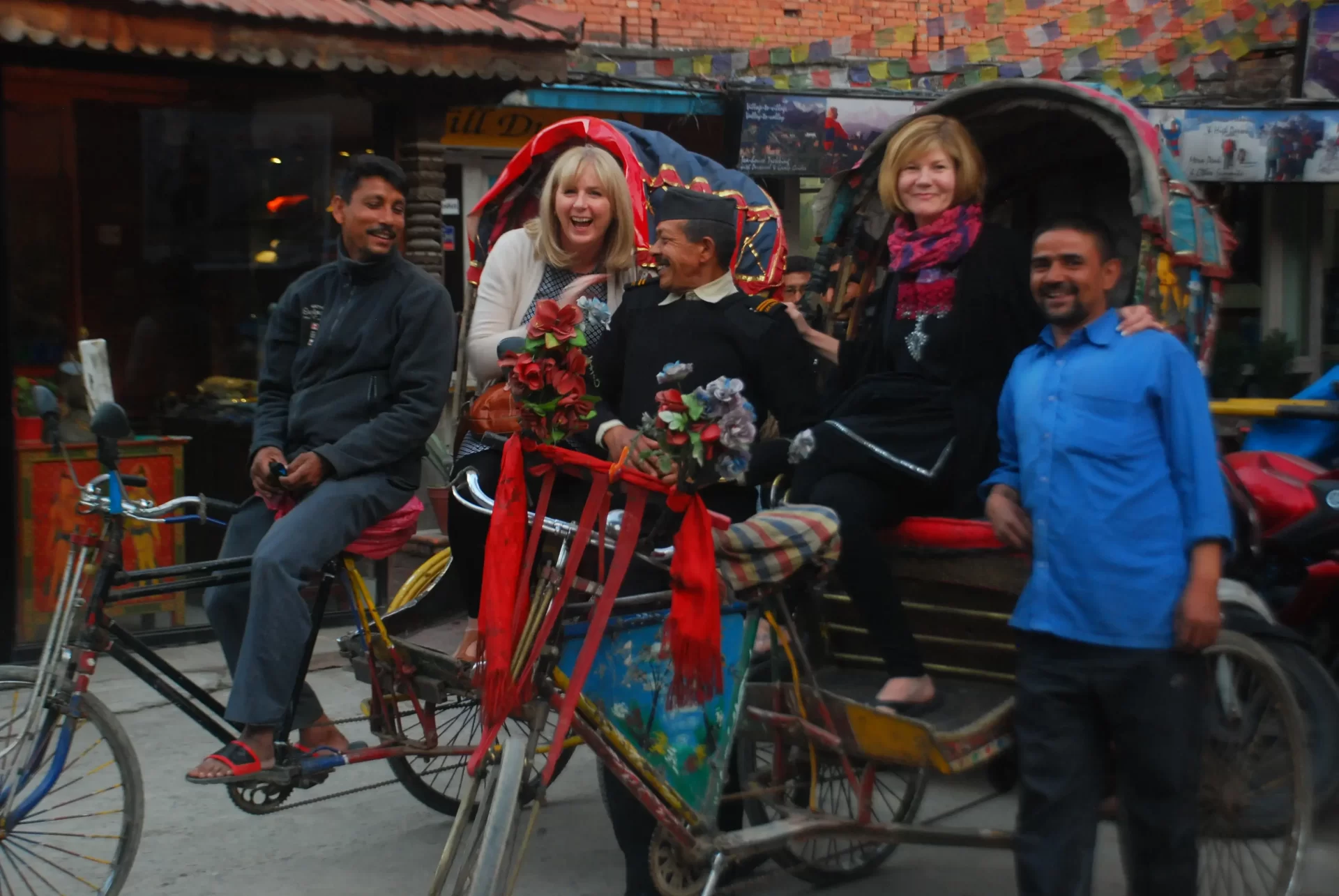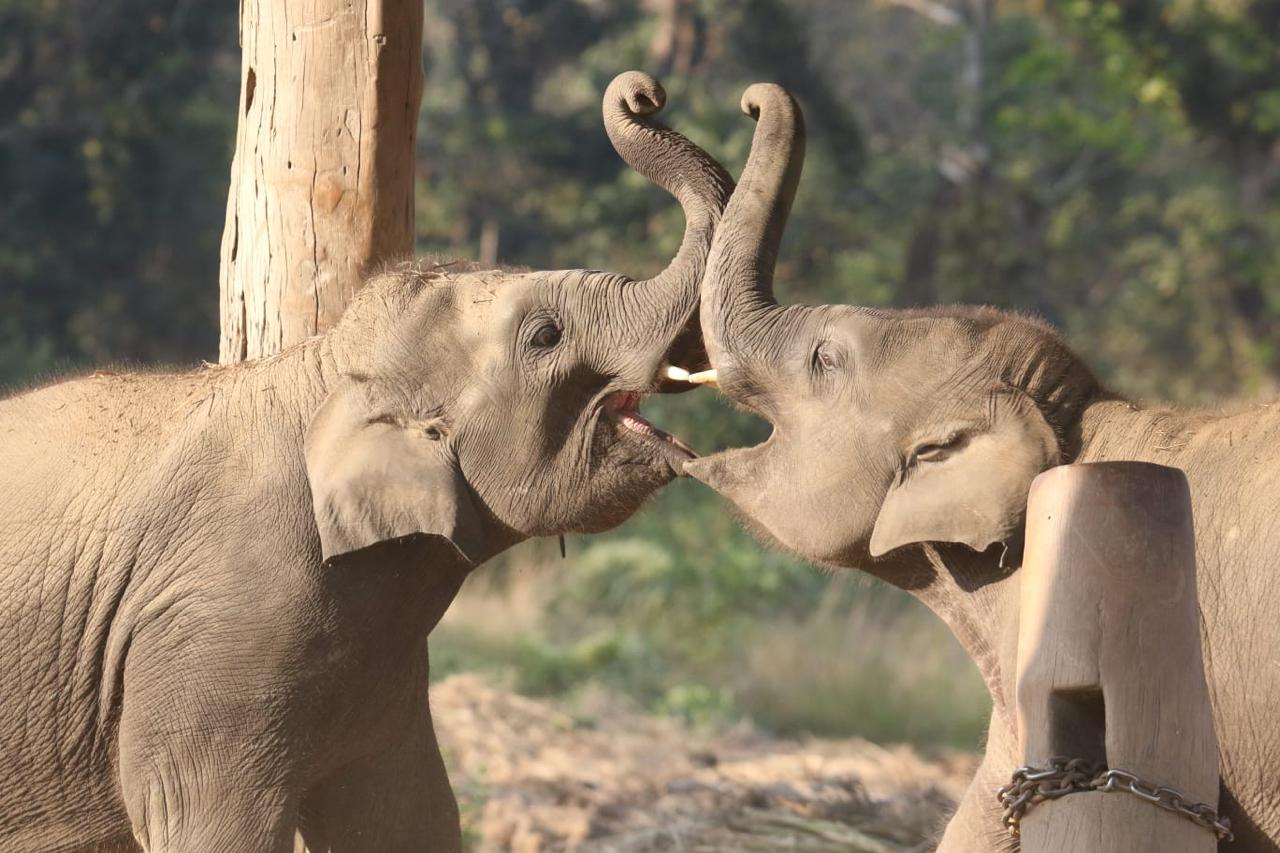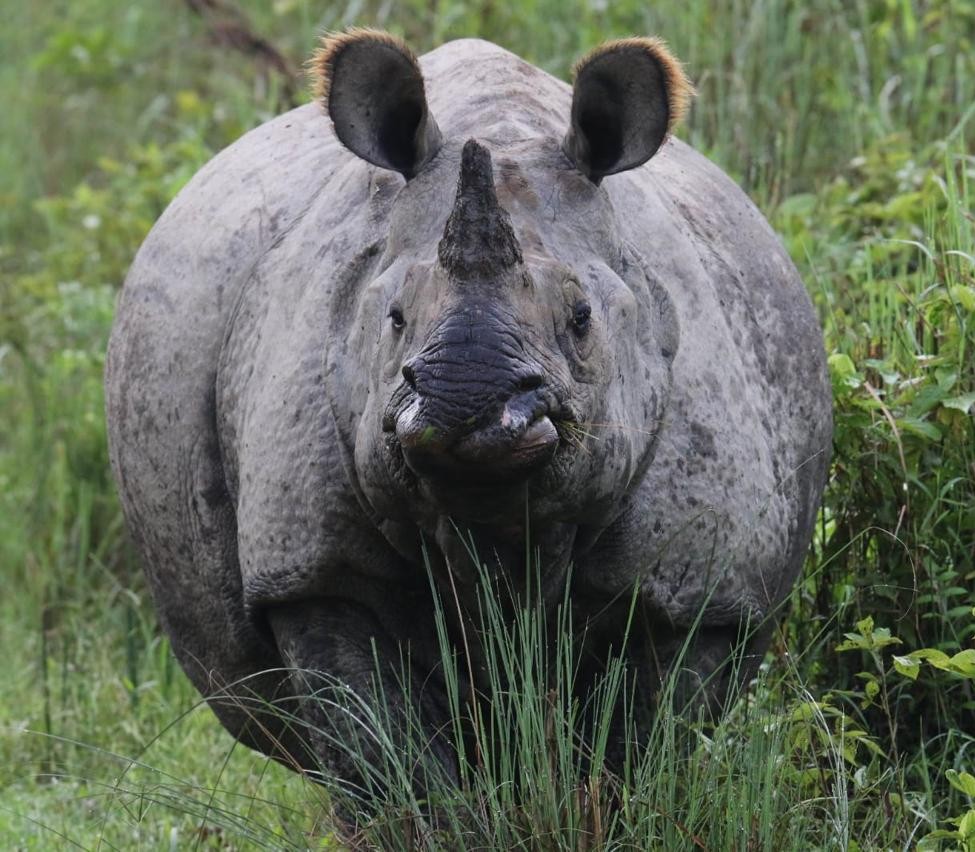The Beauty of Bhutan Tour takes you to a land nestled in the Eastern Himalayas, where centuries of self-imposed isolation have preserved its unique cultural and natural heritage. Bhutan gradually opened up to the world at a measured pace, allowing its people to live in harmony with nature while fostering a distinct identity rooted in […]
Trip overview
The Beauty of Bhutan Tour takes you to a land nestled in the Eastern Himalayas, where centuries of self-imposed isolation have preserved its unique cultural and natural heritage. Bhutan gradually opened up to the world at a measured pace, allowing its people to live in harmony with nature while fostering a distinct identity rooted in deep religious and cultural traditions.
Home to just 700,000 people and roughly the size of Switzerland, Bhutan is the world’s only Mahayana Buddhist country. The Buddhist reverence for all sentient beings has played a vital role in safeguarding its pristine ecology and rich wildlife, making it a truly extraordinary destination.
This self-sufficient population was never colonized and had limited contact to the outside world. Buddhism was established in the 8th century by the Indian saint Padmasambhava, popularly known in the Tantric tradition as Guru Rinpoche. Perhaps the most dynamic era in Bhutanese history came in the 17th century with the arrival, in 1616, of Zhabdrung Ngawang Namgyal, the great leader of the Drukpa school of Mahayana Buddhism. He unified the country and established the foundations for national governance and the Bhutanese identity.
In 1907, a historic Assembly of the clergy, the official administration, and the people unanimously elected Gongsar Ugyen Wangchuck as the first hereditary King of Bhutan thus beginning the glorious era of the Wangchuck dynasty. In 2006, the fourth king of Bhutan, Jigme Singye Wangchuck announced that he would abdicate in favor of a constitutional monarchy with a parliamentary democracy. In 2008, the year that marked 100 years of the monarchy saw two important events; the first democratic elections and the coronation of the fifth king, Jigme Khesar Namgyel Wangchuck.
Trip Key Attractions
- Buddha Dordenma: This gigantic golden statue of Buddha overlooks Thimphu Valley, symbolizing peace and prosperity.
- Tashichho Dzong: This grand fortress-monastery houses the throne room and offices of the King and is the summer residence of the central monastic body.
- Folk Heritage Museum: A glimpse into traditional Bhutanese rural life, showcasing everyday tools, farming equipment, and household artifacts.
- Thimphu Weekend Market: Explore local produce, handicrafts, and textiles, giving a taste of Bhutanese culture and flavors.
- Motithang Takin Preserve: Visit the sanc
- Tiger’s Nest Monastery (Taktsang Monastery): Perched on a cliff at 3,120 meters, this iconic site is one of Bhutan’s most sacred and breathtaking locations. The trek to this monastery offers stunning views and a spiritual experience.
- Paro Dzong (Rinpung Dzong): This historic fortress is an architectural masterpiece that also serves as a cultural hub during Paro’s annual festival.
- National Museum of Bhutan: Located in the Ta Dzong, this museum showcases Bhutanese art, artifacts, and history, providing a deeper understanding of the kingdom’s heritage.
- Chele La Pass: The highest motorable pass in Bhutan offers panoramic views of the Himalayan range, including Mount Jomolhari.
- tuary to see the takin, Bhutan’s national animal, a unique and fascinating creature.
- Punakha Dzong: Known as the “Palace of Great Happiness,” this stunning fortress lies at the confluence of the Pho Chhu and Mo Chhu rivers. It’s famous for its intricate architecture and historical significance as the winter residence of the central monastic body.
- Suspension Bridge: Bhutan’s longest suspension bridge, offering picturesque views of the surrounding valleys and rivers, perfect for photography and a gentle adventure.
- Chimi Lhakhang: The “Temple of Fertility,” dedicated to the Divine Madman, Lama Drukpa Kunley, is a unique spiritual site frequented by locals and visitors alike.
- Rice Fields of Punakha Valley: Enjoy serene walks through vibrant green rice paddies and quaint villages.
Trip Itinerary
Expand AllArrival in Kathmandu
As you arrive at Tribhuvan International Airport , our company representative will pick you up with a warm welcome. With a short ride through the bustling streets of Kathmandu city, you will be dropped off at the hotel. After settling in your accommodation, rest and enjoy lunch at the hotel Finally, we will end the exploration with an evening walk at Thamel district near the hotel. A warm welcome dinner is planned for tonight to talk about the tour and final preparation for Bhutan visa.
Full day sightseeing of Kathmandu
You can also try your hand at pottery at the local pottery shops and enjoy authentic Newari cuisines like “juju dhau” (yogurt), bara (Savory pancakes), Chatamari (rice flour bread with toppings), and much more.
Arrive Paro by air & transfer to thimphu (55 kms / 1½ hrs drive)
The flight to Paro is one of the most spectacular in entire Himalayas. Flying along the Himalayan range from Kathmandu, the journey offers fascinating views and an exciting descent into the Kingdom. Bhutan’s first gift, as you disembark from the aircraft will be cool, clean fresh mountain air. After immigration formalities and baggage collection, you will be met by our representative, and afterwards drive to Thimphu, the capital town of Bhutan with enroute stop at Chuzom, the confluence of Thimphu and Paro rivers. Three different style of stupas; Tibetan, Nepalese and Bhutanese adorn this confluence. Shortly before reaching Chuzom, you will see on your left Tschogang Lhakhang, “the temple of the excellent horse”. It is a private temple, built in 15th century, as the result of visitation from Balaha, the excellent horse, a manifestation of Chenrezig, the compassionate Buddha.
On arrival in Thimphu, check into the hotel. The capital town of Bhutan and the centre of Government, religion and commerce, Thimphu is a unique city with unusual mixture of modern development alongside ancient traditions. With the population of about 90,000 it is perhaps still the world’s only capital city without a traffic light. Evening an exploratory walk around Thimphu Main Street and market area. Also visit the Local Crafts Bazaar, to browse through example of Bhutan’s fine traditional arts. Here you can buy hand-woven textiles, Thangka paintings, masks, ceramics, slate and wood carvings, jewellery, interesting items made from local materials.
Visit Thimpu
After breakfast, sightseeing in Thimphu valley including visit to the following: The National Library, housing an extensive collection of priceless Buddhist manuscripts; the Institute for Zorig Chusum (commonly known as the Painting School) where students undergo a 6-year training course in Bhutan’s 13 traditional arts and crafts. Later visit Textile Museum, which provides insight into Bhutan’s one of the most distinct art form. After lunch take a short drive (15 km) to Pangri Zampa, 16th century one of the oldest monasteries in Bhutan located just north of Thimphu. Here is a monastic school where Buddhist student’s monks learn Lamaism and astrology based on Buddhist philosophy.
Afterwards visit to Buddha Point (Kuensel Phodrang). Located at a short drive from Thimphu city centre, visitors can get a good overview of the Thimphu valley from the Buddha point (Kuensel Phodrang). You can pay your obeisance and offer prayers to the Buddha, the largest statue in the country and then walk around and take a glimpse of the valley. King’s Memorial Chorten continuously circumambulated by people, murmuring mantras and spinning their prayer wheels. Construction of this landmark was the idea of Bhutan’s third king, His Majesty Jigme Dorji Wangchuk (“the father of modern Bhutan”) who has wished to erect monument to world peace and prosperity. Completed in 1974 after his untimely death, it serves both as a memorial to the Late King and as a monument to peace. Later visit to Tashichhoedzong: This impressive fortress/monastery houses Secretariat building, the throne room of His Majesty, the King and various government offices. It is also the summer residence of Chief Abbot and central monk body.
Thimpu-Punakha
After breakfast at hotel, Drive to Punakha across Dochula pass (3O8Om). In Bhutan, the passes are marked by a large Bhutanese Chorten and prayer flag. Dochula pass offers the most spectacular view over the high peaks of the eastern Himalayas on a clear day. After checking into hotel, proceed to visit Punakha Dzong, a massive structure built at the junction of two rivers. It was the capital of Bhutan until 1955, and still serves as the winter residence of the monk body. Later in the day excursion to Chimi Lhakhang (from hotel it is about 15 minutes’ drive till motorable road and then walk starts through paddy fields and villages.
This is total about 1½ hour walk, including both way). The Chimi Lhakhang, situated on a hillock in the centre of the valley, also known as the temple of fertility. It is widely believed that couples who do not have children and wanting one, if they pray at this temple, they are usually blessed with a child very soon. The trail leads across rice fields to the tiny settlement of Pana, meaning ‘field’. A walk through the village near the temple will give you rare glimpses into the daily life and lifestyle of the villagers Evening can be spent exploring Punakha village located right on the bank of river.
Punakha-Paro
After breakfast, check-out from the hotel and drive to Paro along scenic highway, enroute visit SimtokhaDzong, the oldest fortress of the country built in 1627 which now houses the School for Buddhist studies. On arrival in Paro, check into the hotel. After lunch, proceed to visit Ta Dzong, originally built as Watchtower, which now houses National Museum. The extensive collection includes antique Thangkha paintings, textiles, weapons &armour, household objects and a rich assortment of natural and historic artifacts.
Ta Dzong visit immediately followed by a short walk down the trail to visit Rinpung Dzong (ParoDzong), meaning (“fortress of the heap of jewels”), which has a long and fascinating history. Along the wooden galleries lining the inner courtyard are fine wall paintings illustrating Buddhist lore such as four friends, the old man of long life, the wheel of life, scenes from the life of Milarepa, Mount. Sumeru and other cosmic Mandala.
Visit Haa Valley
Start the day early for a full day excursion to Haa via Chele-la pass (3800 m / 12465 Fts, 65 Kms / 02 to 03 Hrs – One way) with packed or early breakfast. Visit Haa Dzong, Lhakhang Karpo, Lhakhang Nagpo, Wangchulo Dzong. Evening, visit the 7th century Kyichu Lhakhang, one of the 108 temples built in the Himalayas by Tibetan King, Songtsen
Gampo. The building of this temple marks the introduction of Buddhism in Bhutan.
Departure Paro and Onward Journey
After early breakfast at the hotel, drive to the airport for flight to your onward destination. Our representative will help you with exit formalities and then bid you farewell. If you are arriving at Kathmandu, our representative will escort you through the airport.
Trip Cost Includes
- Accommodation in Double/Twin sharing basis with Single room supplement as per the mentioned Hotels.
- Meal Plan MAP (Bed, Breakfast & Dinner)
- SDF(Sustainable development fee)- USD 15/- per person per Night
- Experienced English Speaking Tour Guide licensed by the Tourism Council of Bhutan
- 1 full day sightseeing of Kathmandu with Licensed English Speaking guide in a private vehicle
- Transportation
- Complementary Water- 1 bottle per person per day with welcome with white scarf
- Museum, monuments entrance fees all applicable taxes
- Lunch at Local Restaurant
- All transfers and sightseeing as per the itinerary
- Pick & Drop to Paro Airport
Trip Cost Excludes
- Air ticket(flight fare) both International and Domestic
- Accomodation and Meals in Kathmandu
- Travel Insurance/ Insurance of any kind
- Festival SurCharge (USD 105 per night)
- Medical expense
- Entrance fees for monument in Kathmandu Sightseeing
- Expenses of personal nature (like Gratuities tipping, laundry, Telephone/fax calls, bar bills, camera/video fees etc).
- Horse charge for Tiger’s Nest hike
- Bhutanese traditional hot stone bath.
- Beverages (alcoholic / non– alcoholic)
- Airfare & airport taxes
Trip date and time
| Dates | Price | Availability |
|---|---|---|
|
Select Date:
Please select the date |
US$ 2600 |
Trip Reviews
Login to ReviewWhat makes this trip different ?
 Environment-Friendly Initiative
Environment-Friendly Initiative
- Awesome Holidays Nepal believes in contributing to the wellness of the environment while promoting adventure and tourist destinations in Nepal.
- For every visitor who books a trip or trek with us, we plant a fruit tree in barren lands in collaboration with community forests.
 Giving Back to the Community
Giving Back to the Community
- Awesome Holidays believes that the native residents know any destination better than an outsider. Thus, the guides, porters, and travel companions who will serve you through the trek or tours are local residents of that particular region.
- As a part of our communal service, Awesome Holidays is also contributing to the welfare of street dogs by feeding them every week.
Similar trips
Experience the difference with our trek experts guiding you through the most challenging trekking routes of Nepal's most famous mountain base camps. We believe in making every journey awesome for you!

